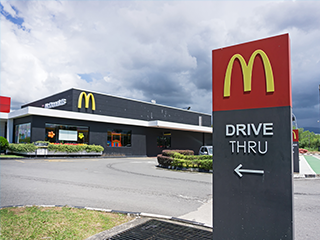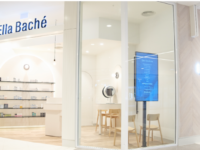McDonald’s Australia is preparing to spend more than $500m on expansion efforts across the country, including plans to bolster its representation in regional areas.
The plan is expected to take three years, with the ‘golden arches’ committing to a $350m investment that will see the launch of 45 new restaurants in the prime retail hubs of Melbourne and Sydney.
The investment will bring McDonald’s total number of Australian outlets above 1000 for the first time with the chain eager to develop its growing number of freestanding locations.
Josh Bannister, McDonald’s senior development director said the brand’s aggressive nation-wide expansion announcement comes off the back of prolonged network success, and serves as a key component of McDonald’s growth strategy.
“McDonald’s has opened more than 100 restaurants around the country in the last seven years, and we plan to invest approximately $500 million in new restaurants and refurbishments over the next three years, including up to $200 million in NSW,” Bannister said.
“These new restaurants will be in both metro and regional areas, with a large focus on key growth corridors in each state.”
Over the last few years, the highly successful Australian operation has shyed away from shopping centre sites, preferring instead to forefront its freestanding and greenfield models.
Bannister confirmed that the latest expansion efforts would follow suit, however reiterated McDonald’s was not averse to site diversification, provided the right mix of opportunity and flexibility was on offer.
“We are a business model that favours land ownership and we own the land of two in every three restaurants that we open,” Bannister said.
“Our core business is freestanding restaurants with drive through, however we are able to adapt in a number of different ways to ensure we can continue to grow. This includes integration with mixed use development, highway service centres and smaller format retail sites in CBDs and premium railway stations.”
McDonald’s venture into regional areas is also likely to bolster the brand’s profits, with new reports from the Australian government suggesting sub-regional areas present a rapidly growing fast-food consumer market.
Earlier this month, Inside Franchise Business reported that investment value in community-based dining precincts had drastically increased, with ‘meals out and fast food’ equating to 34 per cent of total household food expenditure in 2015-16, up from just 15 per cent in 1988-89.
Bannister said the expansion within regional areas would be reliant on consumer demand, with the brand confident of finding locations that meet the mark.
“The things we consider for potential locations include the availability of sites, suitable zoning, access to major thoroughfares, population growth and local demand,” Bannister said.
“We’re a customer-driven business; everything – from the food we serve, to the design and facilities in our restaurants – is in response to their needs and is focused on providing the best possible dining experience.”











